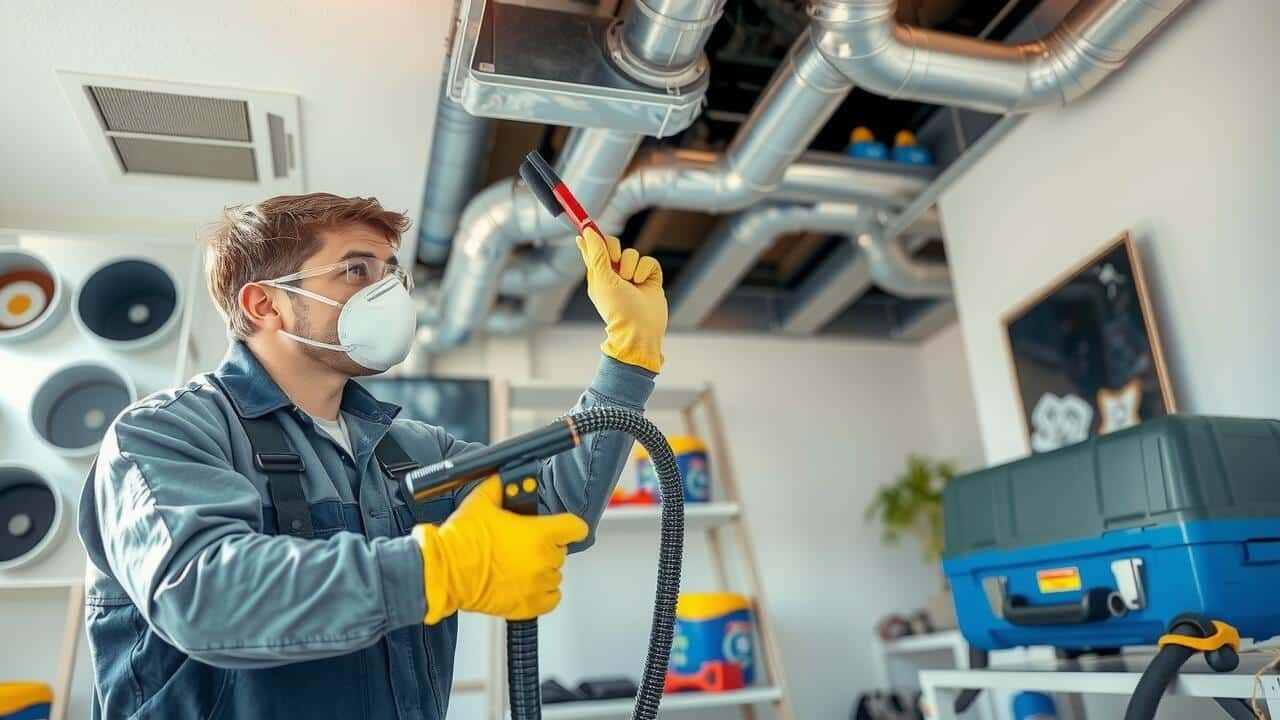
Table Of Contents
The Impact on Energy Efficiency
Air duct cleaning plays a significant role in enhancing the energy efficiency of heating and cooling systems. When ducts accumulate dust, debris, and contaminants, they obstruct airflow. This blockage forces HVAC systems to work harder to circulate air, leading to increased energy consumption. By removing these obstructions through professional air duct cleaning, homeowners can help their systems operate more efficiently, ultimately reducing wear and tear on equipment.
Regular air duct cleaning can lead to noticeable reductions in energy costs. When systems function efficiently, they require less energy to maintain desired temperatures, which in turn lowers utility bills. Clean ducts can also contribute to improved indoor air quality, allowing for better circulation and reduced humidity levels. Homeowners can enjoy a more comfortable living environment alongside the financial benefits that come from lower energy usage.
Do Clean Ducts Help Reduce Energy Costs?
Over time, dust, debris, and other contaminants accumulate in the ductwork of a heating and cooling system. This buildup can restrict airflow, forcing the system to work harder to maintain the desired temperature. As a result, energy consumption increases, leading to higher utility bills. Air duct cleaning helps remove these obstructions, potentially restoring efficiency and reducing the overall workload on HVAC systems.
Cleaner ducts can also contribute to a more uniform temperature distribution throughout a home. When airflow is unrestricted, the heating or cooling systems can perform optimally, reducing the need for constant adjustments. This improved efficiency can lead to noticeable savings on energy costs over time, making air duct cleaning a worthwhile consideration for homeowners seeking to enhance their energy efficiency.
Allergies and Respiratory Health
Air Duct Cleaning can play a significant role in improving indoor air quality. Over time, dust, pollen, mold spores, and other allergens accumulate in the ducts, circulating throughout the living space when the heating or cooling system operates. These particles can trigger allergic reactions and exacerbate respiratory issues in sensitive individuals. By removing these contaminants through a thorough cleaning process, homeowners may notice a reduction in allergy symptoms and an overall improvement in the air they breathe.
In addition to alleviating allergies, clean air ducts contribute to a healthier environment for all occupants. Pollutants that linger in the air can lead to discomfort and health problems, particularly for children, the elderly, and those with pre-existing conditions. Air Duct Cleaning not only helps eliminate harmful substances but also enhances the efficiency of HVAC systems, potentially reducing the risk of moisture buildup that can foster mold growth. Regular maintenance can be an essential step in promoting better respiratory health for families.
How Duct Cleaning Can Alleviate Allergy Symptoms
Allergens such as dust, pollen, and pet dander can accumulate in air ducts over time, significantly contributing to indoor air pollution. When the heating or cooling system operates, these irritants can be circulated throughout the home, exacerbating allergy symptoms for sensitive individuals. Air Duct Cleaning can remove these accumulated contaminants, leading to improved air quality and a more comfortable living environment.
In addition to reducing irritants, Air Duct Cleaning can help decrease the frequency of allergy attacks by ensuring that the air circulating in the home is cleaner and healthier. With fewer allergens in the air, residents may notice a reduction in symptoms such as sneezing, nasal congestion, and eye irritation. This proactive approach can create a healthier atmosphere for everyone, particularly those who suffer from chronic allergies or respiratory issues.
Choosing the Right Service Provider
When selecting a service provider for Air Duct Cleaning, it’s essential to consider their qualifications and experience. Look for companies that are certified by recognized industry organizations. A reputable provider will have trained technicians who understand the nuances of various HVAC systems. Customer reviews and testimonials can provide insight into the company’s reliability and quality of service.
It’s also important to inquire about the methods and tools used during the Air Duct Cleaning process. Some companies might use outdated techniques that may not be effective. Ensure the provider follows industry best practices and uses modern equipment designed for thorough cleaning. A detailed plan and clarity regarding the cleaning process can also contribute to a satisfactory service experience.
What to Look for in a Duct Cleaning Company
When selecting a duct cleaning company, it’s essential to evaluate their experience and reputation. A well-established service provider will typically have positive reviews and satisfied customers. Checking online ratings and testimonials can offer insights into their reliability. It’s also wise to inquire about their certifications, as reputable companies often adhere to industry standards.
Another critical factor is the cleaning process they utilize. Ensure the company uses thorough techniques that include high-powered vacuums and specialized tools for air duct cleaning. Ask about their methods for removing dirt, dust, and contaminants from ducts. Transparent companies should provide detailed information about their process and any additional services they may offer, such as inspections or repairs.
FAQS
Does cleaning air ducts really improve indoor air quality?
Yes, cleaning air ducts can significantly improve indoor air quality by removing dust, allergens, and other pollutants that can accumulate over time.
How often should air ducts be cleaned?
It is generally recommended to clean air ducts every 3 to 5 years, but this can vary based on factors such as the presence of pets, tobacco use, and environmental conditions.
Can duct cleaning help reduce energy costs?
Yes, clean ducts can enhance energy efficiency by allowing your HVAC system to operate more effectively, potentially leading to lower energy bills.
What should I look for in a duct cleaning company?
Look for a company that is certified, experienced, and has positive customer reviews. It’s also important to ensure they follow proper cleaning protocols and provide a written estimate.
Are there any risks associated with air duct cleaning?
If not done properly, duct cleaning can potentially cause damage to your ducts or release particles back into the air. It’s important to hire a qualified professional to mitigate these risks.
